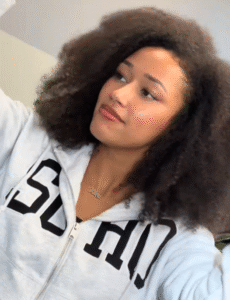Curly hair has always carried a certain magic. It bounces, coils, and shines with a personality all its own. Yet for years, that magic was overshadowed by frustration. Many people with curls were told their natural texture was unruly, unprofessional, or simply not beautiful enough. The pressure to conform pushed countless individuals into straightening irons, chemical relaxers, and endless hours of heat styling. The result was predictable: brittle strands, split ends, and a painful sense that their natural hair needed to be hidden.
The curly hair transformation taking place today is a powerful reversal of that narrative. Around the world, people are turning away from damage and shame and embracing their spirals with pride. It’s not just about hairstyles—it’s about confidence, culture, and authenticity. What was once dismissed as “messy” is now recognized as a crown, unique and radiant in its individuality.
The first step in this transformation has been understanding the science of curls. Because of their twists and turns, natural scalp oils struggle to coat curly strands evenly. This makes dryness and frizz common, especially when paired with harsh shampoos designed for straight hair. Now, routines are built around hydration and nourishment. Gentle, sulfate-free cleansers protect natural moisture. Conditioners bring back softness, and deep treatments restore strength to strands stressed by years of styling. Oils like argan, jojoba, and coconut lock in hydration, creating curls that are resilient and full of life.
Styling has also undergone a revolution. Instead of trying to flatten curls, people are finding joy in enhancing them. Finger-coiling defines spirals with precision, twist-outs highlight texture, and plopping helps curls dry naturally with less frizz. Diffusers on low heat add bounce while protecting delicate strands. Curl-specific products like creams, mousses, and gels allow for definition without stiffness, leaving hair soft and touchable. Protective styles such as braids and buns have also become popular, offering versatility while helping curls rest and recover.
But perhaps the biggest transformation has been cultural. Social media has become a hub where curly-haired people share tips, routines, and personal stories. Transformation photos show not just new hairstyles but new confidence, proving that natural hair can thrive with patience and care. Representation in media has also expanded. Curls that once were straightened for runways, red carpets, and magazine covers are now celebrated in their natural state. This visibility tells children and adults alike that their hair is worthy of admiration exactly as it is.
The emotional impact of this shift is profound. People who once dreaded seeing their reflection now smile at their curls as their proudest feature. Parents are raising children to love their natural texture, teaching them from an early age that curls are not a problem to be solved but a gift to be cherished. For many, embracing curls has become a form of healing—shedding years of insecurity and reclaiming an authentic identity that had been suppressed.
The curly hair transformation is not just about hair care. It’s about rewriting old narratives and rejecting narrow definitions of beauty. Spirals, coils, and waves are no longer seen as flaws. They are radiant symbols of individuality, resilience, and strength.
When nurtured with patience and worn with pride, curls become more than strands of hair. They become crowns—living, breathing testaments to the power of authenticity. And in celebrating them, people are reminded that true beauty lies not in conformity, but in the courage to embrace exactly who you are.


